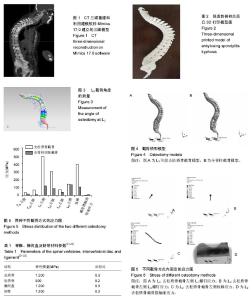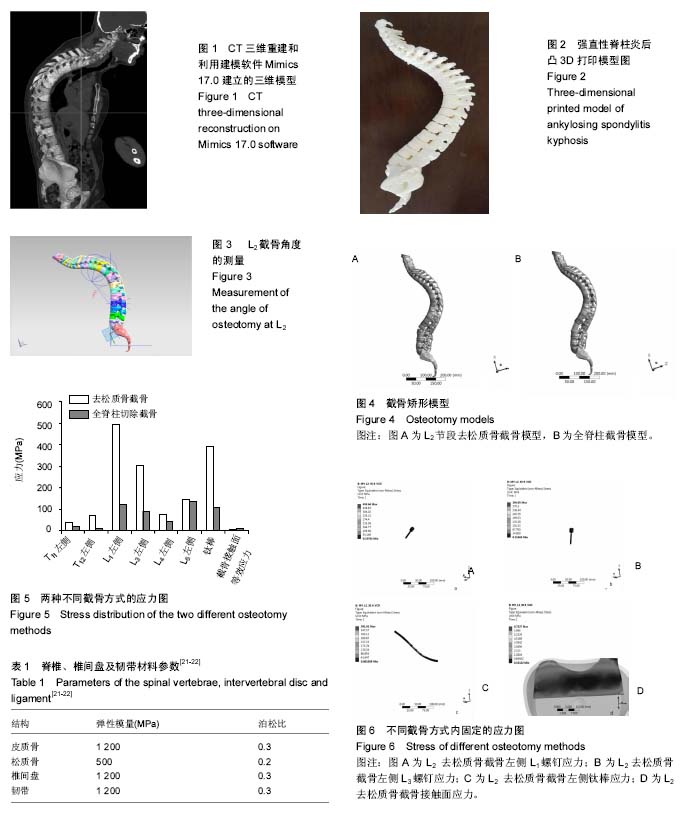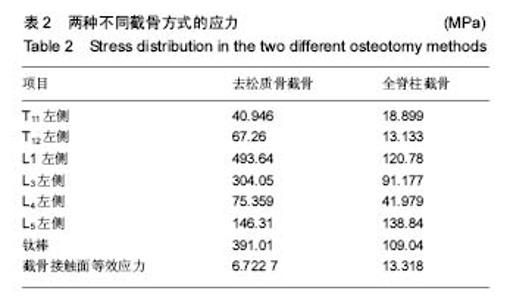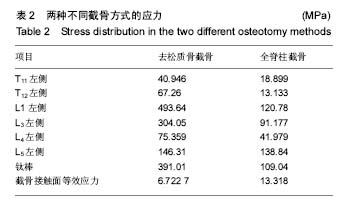| [1] 管明强. 强直性脊柱炎诊疗现状的临床研究[D].南方医科大学, 2014.[2] 施桂英. 强直性脊柱炎诊治指南(草案)[J]. 中华风湿病学杂志, 2003,7(10):641-644.[3] 宋若先,张永刚. 强直性脊柱炎后凸畸形矫形修复中截骨方法的进展[J]. 中国组织工程研究, 2012,16(17):3218-3222.[4] Braun J, Baraliakos X, Godolias G, et al. Therapy of ankylosing spondylitis–a review. Part I: Conventional medical treatment and surgical therapy. Scand J Rheumatol. 2005; 34(2):97-108. [5] 袁震. 生物-心理-社会医学模式的临床应用特征(英文)[J]. 中国临床康复,2005,9(8):252-253.[6] 李晏,黄烽. 不容忽视强直性脊柱炎患者的精神心理异常[J]. 中华风湿病学杂志,2012,16(2):73-76.[7] 齐鹏,宋凯,张永刚,等. 单节段脊柱去松质骨截骨与双节段经椎弓根截骨矫正强直性脊柱炎后凸畸形的临床效果比较[J]. 中国脊柱脊髓杂志, 2015,25(9):775-780.[8] 郑国权,王岩,王景明,等. 后路脊柱去松质骨截骨治疗 Pott’s 角状后凸畸形的安全性及有效性[J]. 中国脊柱脊髓杂志, 2016, 26(1): 18-23.[9] 齐鹏,宋凯,张永刚,等. 强直性脊柱炎后凸畸形个性化矫形对术后生活质量影响的相关分析[J].中国骨与关节杂志,2015,14(8): 639-643.[10] 曾岩,陈仲强,郭昭庆,等. 强直性脊柱炎后凸畸形的后路截骨矫形术及疗效分析[J]. 中华外科杂志,2010,48(16):1234-1237.[11] Debarge R, Demey G, Roussouly P. Sagittal balance analysis after pedicle subtraction osteotomy in ankylosing spondylitis. Eur Spine J. 2011;20(5): 619-625.[12] Y?ld?z F, Akgül T, Ekinci M, et al. Results of closing wedge osteotomy in the treatment of sagittal imbalance due to ankylosing spondylitis. Acta Orthop Traumatol Turc. 2016; 50(1):63-68. [13] Qian B, Jiang J, Qiu Y, et al. Radiographical predictors for postoperative sagittal imbalance in patients with thoracolumbar kyphosis secondary to ankylosing spondylitis after lumbar pedicle subtraction osteotomy. Spine. 2013; 38(26): E1669-E1675.[14] Wang MY, Bordon G. Mini-open pedicle subtraction osteotomy as a treatment for severe adult spinal deformities: case series with initial clinical and radiographic outcomes. J Neurosurg Spine. 2016;24(5):769-776. [15] 王岩.严重脊柱侧凸后路截骨矫形的注意事项[J].中华外科杂志, 2010, 48(6): 405-406.[16] Wang Y, Zhang YG, Zheng GQ, et al. Vertebral column decancellation for the management of rigid scoliosis: the effectiveness and safety analysis. Zhonghua wai ke za zhi. 2010;48(22): 1701-1704.[17] 刘新宇,原所茂,田永昊,等. 扩大 “蛋壳” 结合闭合-张开技术治疗胸腰椎角状后凸畸形[J]. 中国脊柱脊髓杂志, 2014, 24(9): 779-783.[18] 张永刚,王岩,张雪松,等. 扩大蛋壳技术单纯后路切除青少年胸腰段半脊椎[J]. 脊柱外科杂志,2007,5(2): 69-72.[19] 金海明,王向阳. 脊柱矢状面畸形截骨角度计算方法的研究进展[J]. 中华骨科杂志,2016,36(5): 298-306.[20] Behari S, Tungeria A, Jaiswal AK, et al. The" moustache" sign: Localized intervertebral disc fibrosis and panligamentous ossification in ankylosing spondylitis with kyphosis. Neurol India. 2010;58(5): 764.[21] Burstein AH, Reilly DT, Martens M. Aging of bone tissue: mechanical properties. J Bone Joint Surg Am. 1976;58(1): 82-86. [22] Shirazi-adl SA, Shrivastava SC, Ahmed AM. Stress analysis of the lumbar disc-body unit in compression a three-dimensional nonlinear finite element study. Spine. 1984;9(2): 120-134.[23] Suk SI, Kim JH, Kim WJ, et al. Posterior vertebral column resection for severe spinal deformities. Spine. 2002;27(21): 2374-2382.[24] Obeid I, Bourghli A, Boissière L, et al. Complex osteotomies vertebral column resection and decancellation. Eur J Orthop Surg Traumatol. 2014;24(1): 49-57.[25] 杨全中,张雪松,杨晓清,等. 脊柱后路去松质骨截骨术用于脊柱畸形翻修手术的安全性和有效性[J]. 中国脊柱脊髓杂志, 2016, 26(8):715-722.[26] 陶笙,王惠先,梁雨田,等. 胸腰椎骨折内固定手术失败原因分析[J]. 中华创伤骨科杂志, 2006, 8(8):740-743.[27] Qian BP, Mao SH, Jiang J, et al. Mechanisms, predisposing factors and prognosis of intra-operative vertebral subluxation during pedicle subtraction osteotomy in surgical correction of thoracolumbar kyphosis secondary to ankylosing spondylitis. Spine (Phila Pa 1976). 2016. [Epub ahead of print][28] Zhang X, Zhang Z, Wang J, et al.Vertebral column decancellation: a new spinal osteotomy technique for correcting rigid thoracolumbar kyphosis in patients with ankylosing spondylitis. Bone Joint J. 2016;98-B(5):672-678. [29] Thiranont N, Netrawichien P. Transpedicular decancellation closed wedge vertebral osteotomy for treatment of fixed flexion deformity of spine in ankylosing spondylitis. Spine (Phila Pa 1976). 1993;18(16):2517-2522.[30] Aurégan JC, Odent T, Zerah M, et al. Surgical treatment of a 180° thoracolumbar fixed kyphosis in a young achondroplastic patient: a one-stage "in situ" combined fusion and spinal cord translocation. Eur Spine J. 2010;19(11): 1807-1811.[31] Sun TS, Li F, Liu Z, et al. Anatomic and clinical study of spinal osteotomies for traumatic fixed kyphotic deformity of thoracolumbar spine. Zhonghua Wai Ke Za Zhi. 2007;45(8): 533-536. [32] Sato S, Goto T, Koike T, et al.One-stage surgery in combination with thoracic endovascular grafting and resection of T4 lung cancer invading the thoracic aorta and spine. J Thorac Dis. 2017;9(11):E1009-E1012. [33] Du K, Lou Z, Zhang C, et al. Transpedicular excision of a thoracic intraspinal osteochondroma in a patient with Hereditary Multiple Exostoses and Brown-Sequard syndrome: a case report. World Neurosurg. 2017. pii: S1878-8750(17)32170-8.[34] Kapetanakis S, Chourmouzi D, Gkasdaris G, et al. Functional extra-adrenal paraganglioma of the retroperitoneum giving thoracolumbar spine metastases after a five-year disease-free follow-up: a rare malignant condition with challenging management. Pan Afr Med J. 2017;28:94. [35] Shawky A, Kellner G, Elnady B, et al. Odontoid-sparing transnasal approach for drainage of cranio-cervical epidural abscess; a novel technique and review of the literature. Spine J. 2017. pii: S1529-9430(17)31216-0. [36] Ying GY, Yao Y, Shen F, et al. Percutaneous endoscopic removal of cervical foraminal schwannoma via interlaminar approach: a case report. Oper Neurosurg (Hagerstown). 2018;14(1):1-5. [37] Valancius K, Garg G, Duicu M, et al.Major destructive asymptomatic lumbar Charcot lesion treated with three column resection and short segment reconstruction. Case report, treatment strategy and review of literature. SICOT J. 2017;3:68. |



